
A conversation with Hannah Maria Schmutterer and Isabella Nimmo
September 13, 2024
The North End neighborhood of Detroit welcomes a new artist residency and project space run by curator Isabella Nimmo, who recently moved to the city to work as the associate curator at the Museum of Contemporary Art Detroit. Her previous experience working with museums in New York and London has prepared her for the work she will do at MOCAD, while also allowing her to recognize the importance of creative spaces that are independent of institutional oversight.
Before even choosing a name, Isabella launched this project with a solo exhibition by artist and fashion designer Hannah Maria Schmutterer. Four large scale works become almost integrated into the building’s architecture, with splashes of color spanning the hand sewn and stretched compositions, meeting the paint patched walls at the edges. Both the walls and the garments seem to be enjoying their own historic preservation. Hannah Maria Schmutterer was raised in Bavaria and recognizes this dress, traditionally called the dirndl, as a symbol of a preserved culture that is still worn in Bavaria today. The creative process itself is performative, as she engages directly in both women’s history of labor and childhood fantasy exploration.
Below is a conversation between Ashley Cook, Hannah Maria Schmutterer and Isabella Nimmo about their backgrounds, the exhibition Shell of the Fairytale, and the future of this new space.
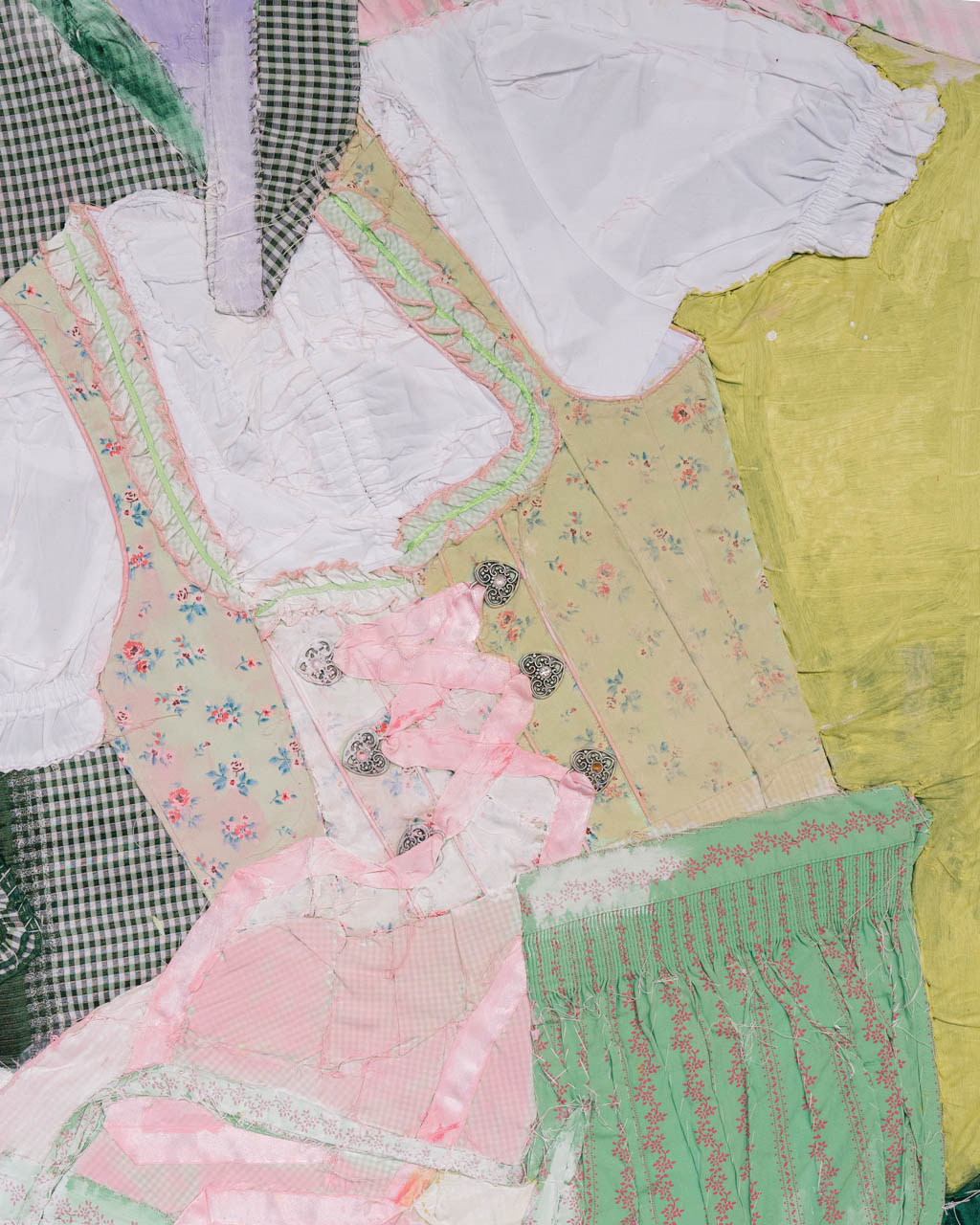
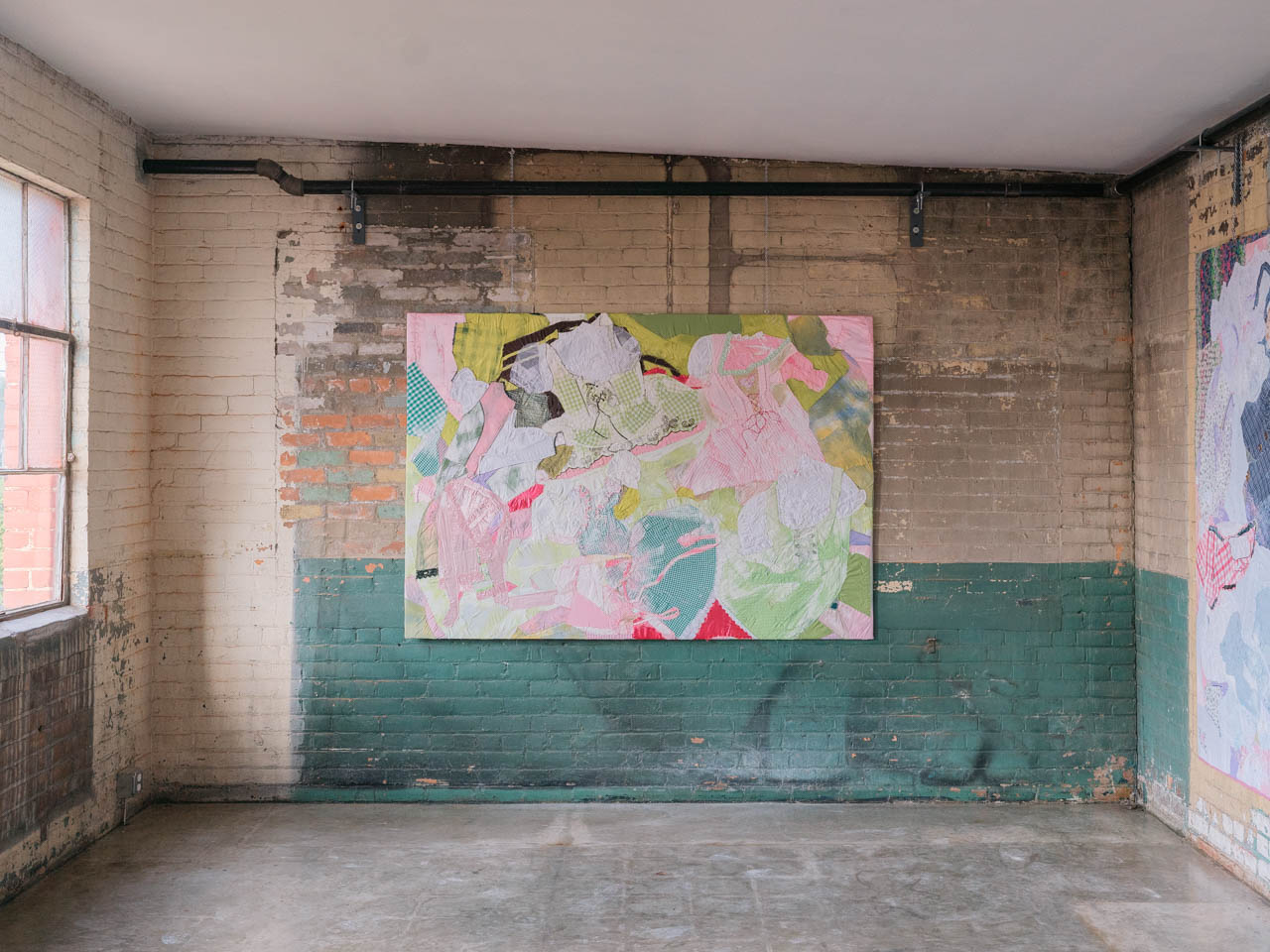
A: I am curious about so many things. So, Isabella is the associate curator at the Museum of Contemporary Art Detroit, and you know her from New York?
H: We actually have known each other for about ten years now. We lived together in London, I was studying, and she worked for the Tate Museum. Her and I would often travel to Venice together for the Biennial. This year when we were there, we discussed her moving to Detroit to work at the MOCAD, and we also talked about her plan to start up this small space on her own in Detroit. From there, this show worked out very naturally. Isabella has known my practice for a while now, and she expressed interest in working with me in Detroit to produce work for the inaugural exhibition of this space.
A: So cool that you made some of the work here. Can you sort of describe how you make these artworks?
H: I studied sculpture and fashion design in school, so I was used to doing collections. I really like this idea of making collections. When I was studying at a Bauhaus University in East Berlin, I saw the runway shows as opportunities for performance. There, design and art function closely together, so we were allowed, and encouraged, to find the connections between the two. After graduating from there, I continued to study sculpture in London.
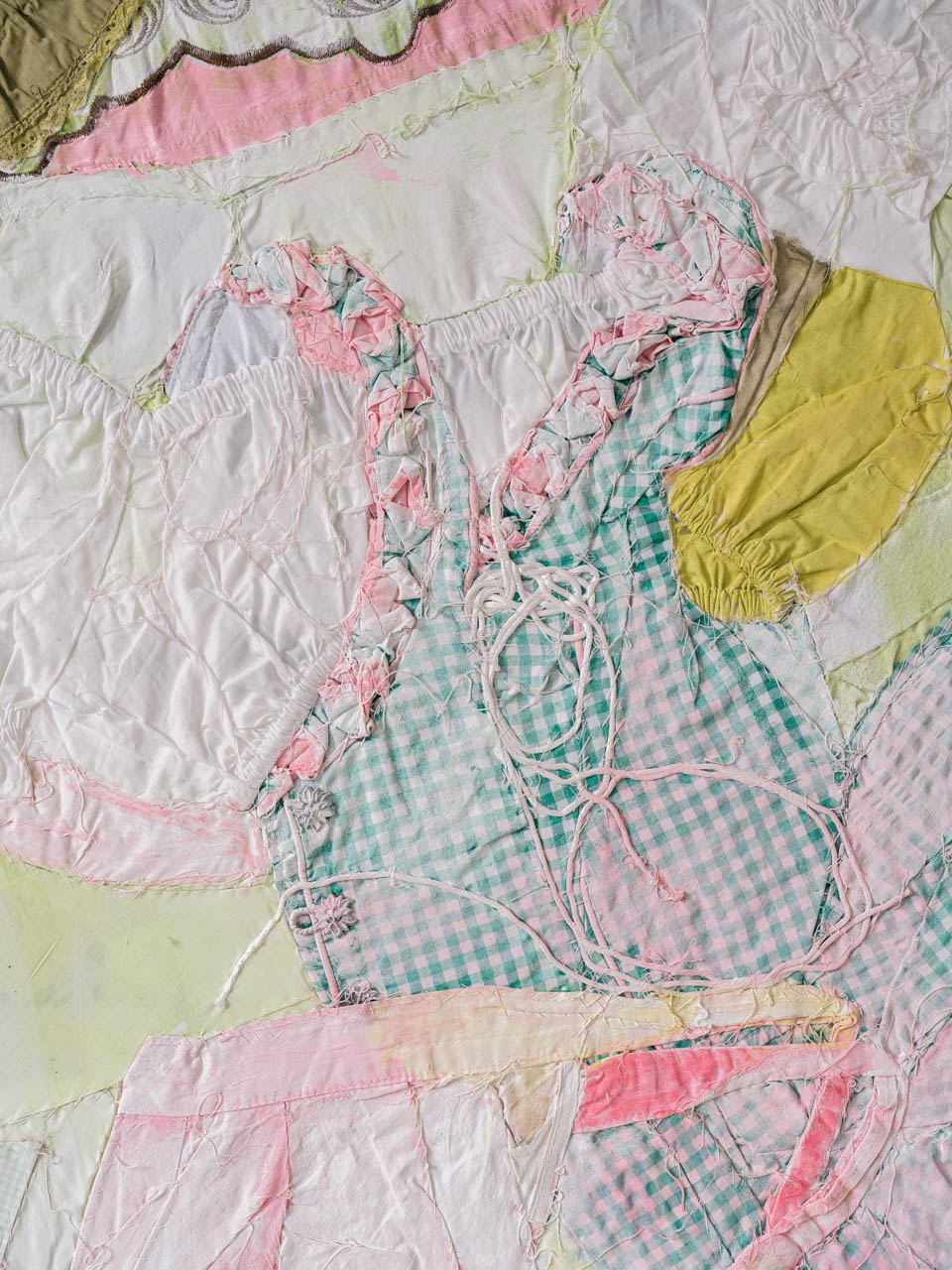
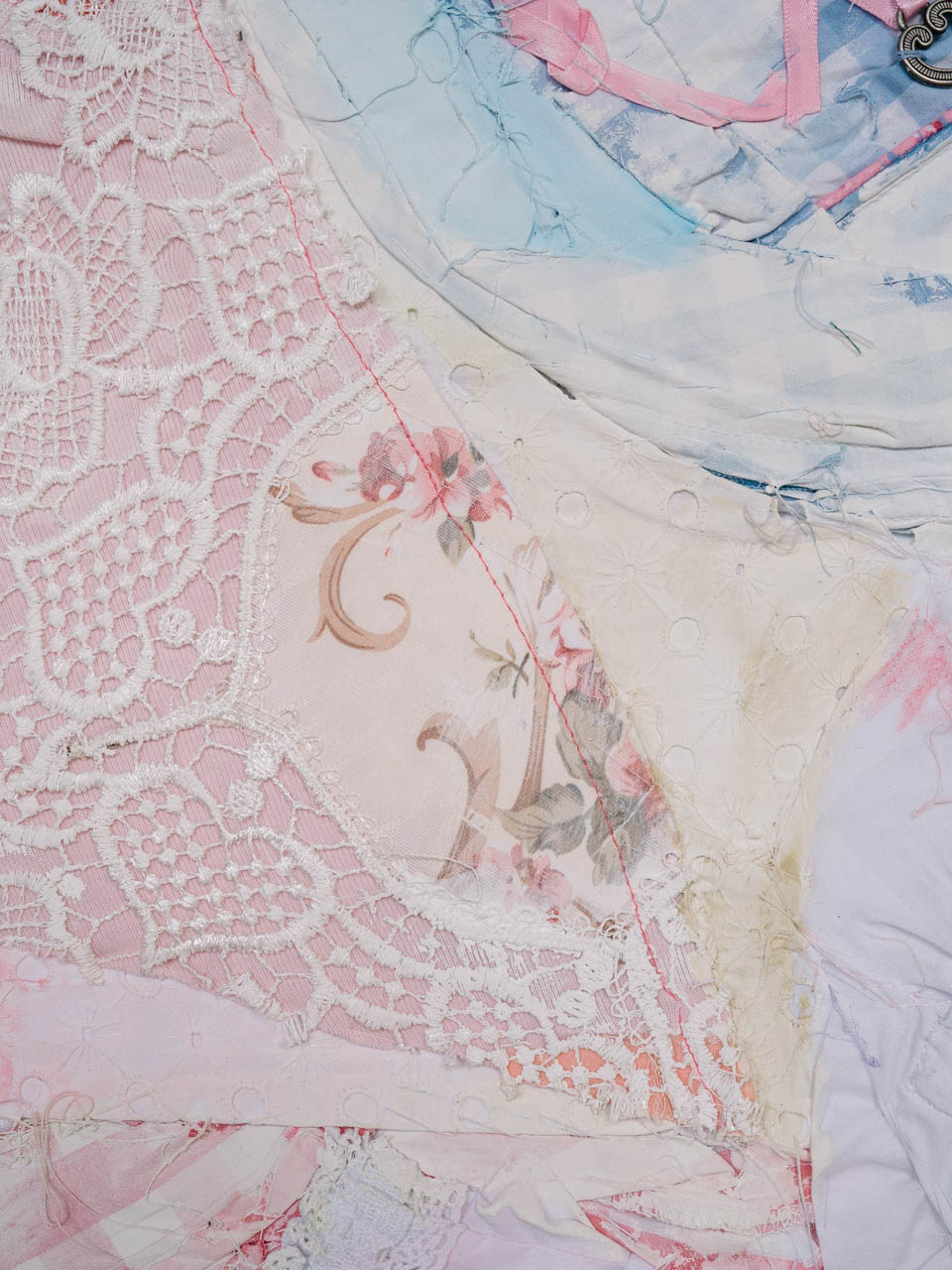
Last year in February, I began really looking for a way to create an object out of the performative aspect of clothing. I use garments that I find or make, collage on the floor and slowly sew them all together by hand. At some point it just starts to become very layered, and I finalize the work by stretching the collage around a frame.
A: So, did you study fashion for your undergraduate degree?
H: Yes, in Berlin. And after that, I went to graduate school in London.
A: What kind of work were you making as a fashion designer? Because here, you are working with traditional Bavarian dresses as the primary focus…
H: As a fashion designer, I did not have too much of an interest in Bavarian dress, because I am from Bavaria and I was so glad to leave, haha. I think my time away from Bavaria allowed the culture to become interesting to me again. When I came back from London to do a residency in Munich, I started to see traditional Bavarian fashion as a symbol for ideas that I have been working with using different kinds of dresses. I was trying to get away from it, but somehow it came back to inform me of what I was trying to do all along.
A: At the opening of the exhibition, you mentioned that people in Bavaria still wear this traditional dress regularly. It is interesting to call attention to this tradition that continued through time.
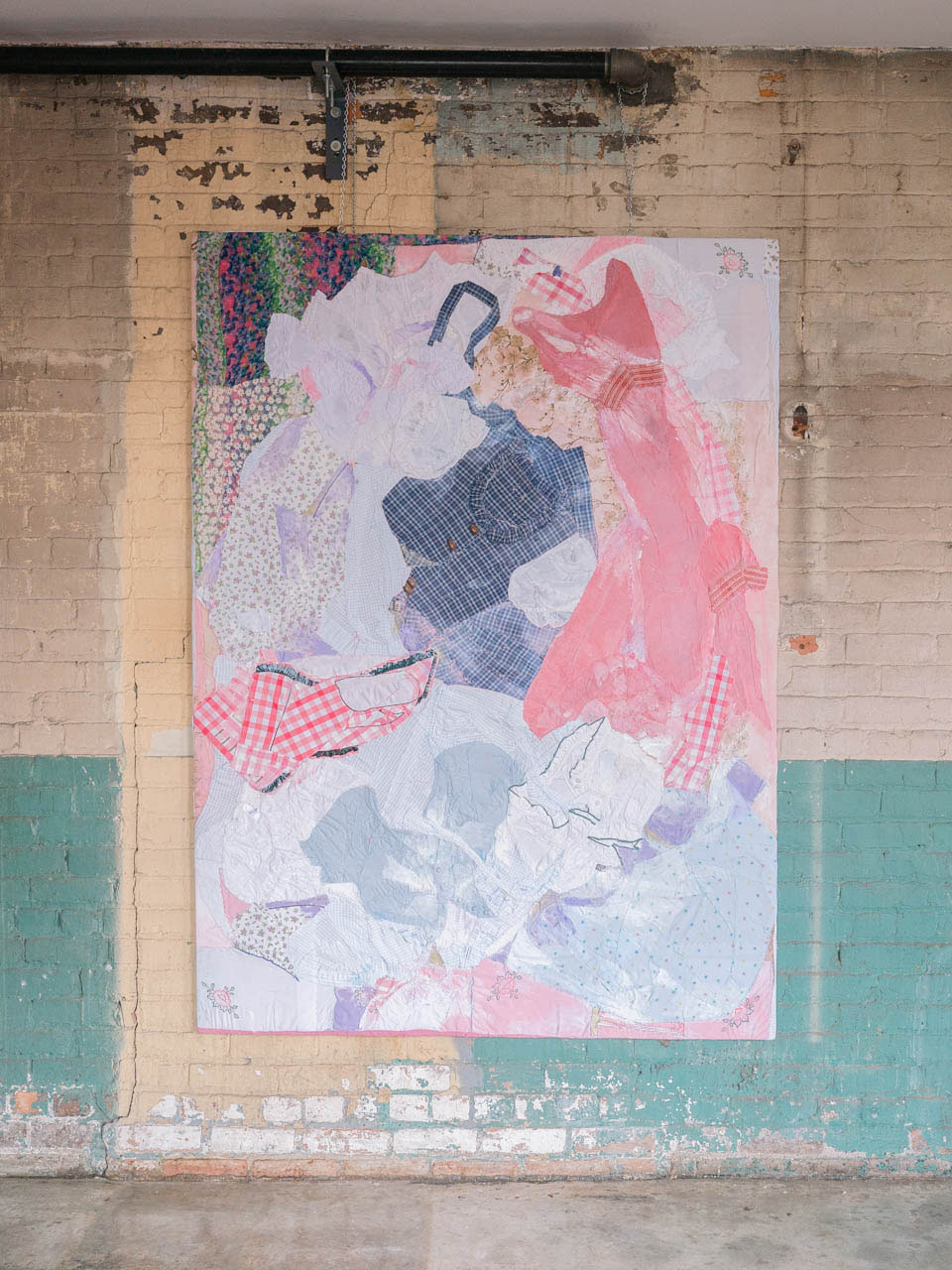
H: Yes, it is such a strange thing too, because it is often used as a costume outside of Bavaria, in contexts like Octoberfest.
A: Are you still interested in working in fashion? Or is your goal to work within the art context these days?
H: I am still making clothes. I always play with the idea of making a fashion collection one day.
A: Were you making this type of work at Royal College of Art?
H: No, this is a new exploration for me.
A: What kind of work were you doing when you were studying in London?
H: I was studying in 2019, and back then, even though it was not so long ago, textile was less accepted. It took a while for textile to become interesting again. From the beginning though, I was creating collections and making performances. That was really strange, how I just could not get away from making clothes, and I had a fascination with the dress in particular.
A: What is your fascination with the dress?
H: I dunno, I have really always been fascinated with the dress. As a kid, I have always loved fairy tales and would always draw dresses.
A: It is interesting how artists are people who really are able to keep their childhood alive throughout their lives. While that does happen subconsciously, I think a lot of artists are also consciously aware of it as a way of being and living. We allow that more imaginative part of ourselves to still have a voice.
The works in this show are very whimsical. Is this your first series working this way?
H: No, actually the first series was also called Shell of the Fairytale, so this show is a continuation of that work.
A: Do you consider these works as paintings?
H: Isabella, you may have a good perspective on that…
I: Ah, I think that is a really interesting question. I personally have an ambivalent relationship to the works. If I were to establish them as any one medium, I would say they were a form of tapestry or quilt making, but because they are stretched on canvas and there is painting throughout the compositions, they assume a place that is in between painting and quilt making, both of which are very gendered practices. The difference in the value landscapes that surround each of those practices is relevant, so in a way, to me, it is important not to describe them as one or the other.
During the opening of the exhibition, people kept referring to the works as paintings. I was interested in how these pieces, which are created using historical labor practices of women, can enter the realm of painting simply by being stretched around a square frame. It becomes an implicit comment on form, labor and gender.
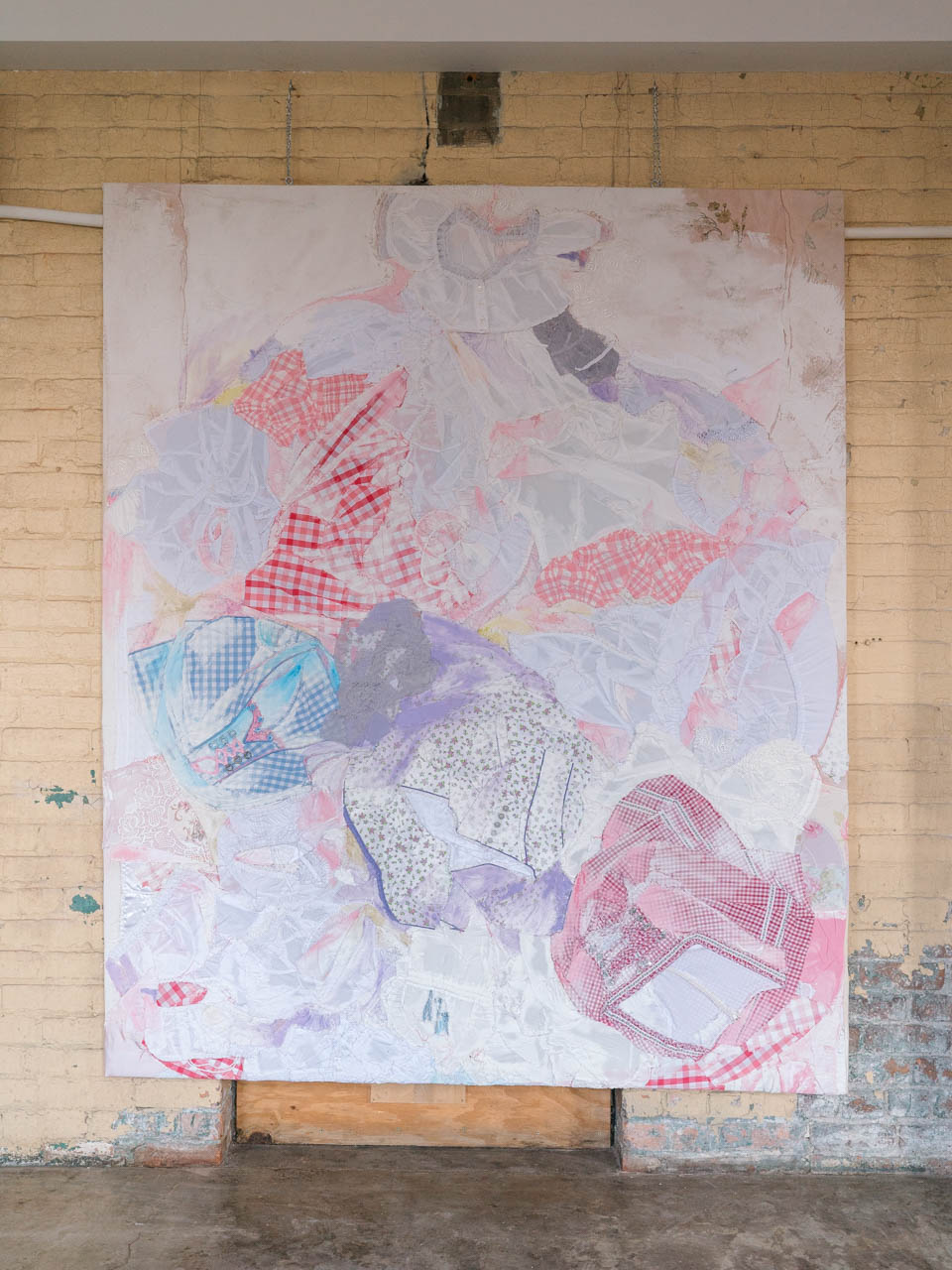
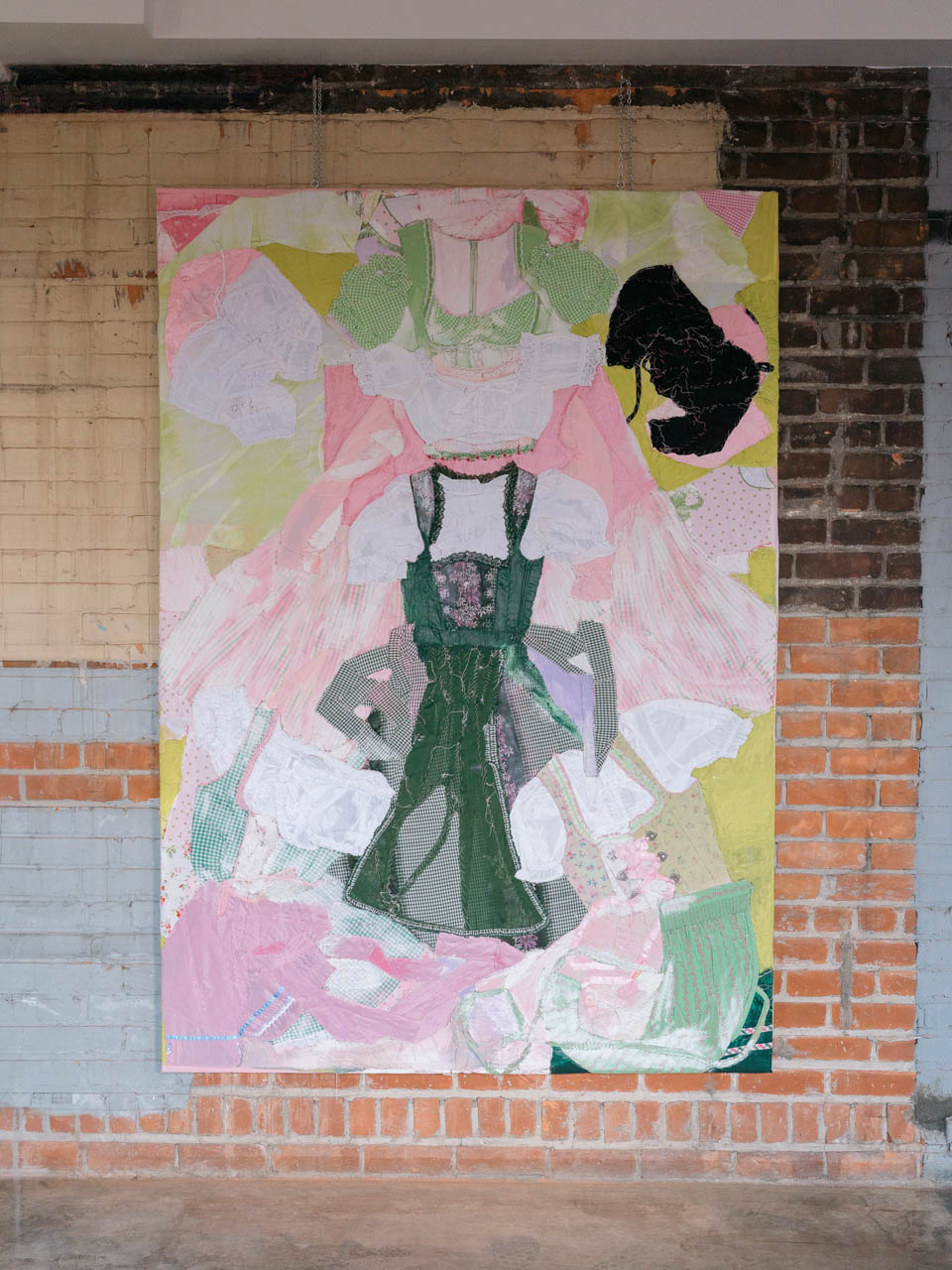
A: Earlier, I asked Hannah about her interest in the dress. She mentioned that ever since she was a child, she was always interested in dresses, leading her to eventually going to school for fashion design. I think it is interesting to focus on the dress within the context of art. As a curator, what do you think about that? How do you think that communicates within the broader art context?
I: I personally have always been interested in high femininity throughout my adulthood, but also as a child. I don’t want to put too much of a classic feminist lens on it because I think that can distract somewhat from Hannah’s personal narrative behind the work, but I do like how Hannah gives a visual language to embrace the aspect of feminist performance without being overly structured by it. There is freedom and liberation in indulging in the performance of femininity without it being an imposition from the outside. This happens through nuance.
A: There is so much labor that went into making these, but it is also interesting that there is such a playfulness about the way that they are laid. For me, I can appreciate the labor without feeling overwhelmed by it. There is a lightness that relates to childhood, and for those of us who are not in or from Bavaria, these are more-so the dresses that our dolls would be wearing, not actual humans that we encounter. I think since these costume-like dresses are human size, it further enhances this fairytale element, and merges it with reality.
I have a question about the use of the fairytale as a topic of discussion. Within the past maybe 10 or 15 years, there has been a larger focus on fairy tales and whimsy aesthetics in art and fashion, and I am wondering what that is about. We were talking earlier about how artists are more apt to preserve their childhood by continuing to embody it through their practice or lifestyle, but generationally, I wonder if Millennials and Gen Z living with the internet has something to do with the increased use of folklore, fairy tales and whimsical aesthetics…
I: I haven’t thought that much about escapism in Hannah’s work. Obviously there is the aspect of play, but escapism is something that we haven’t quite talked about. Speaking of that though, one of the projects that Hannah has worked on recently was a digital game similar to Pokemon Go, where her dresses were superimposed within digital forest landscapes and were able to be searched for and found by going to a specific location in the world.
H: Yes, the dresses were digital, and they were bound to a specific forest. To me, the location where the digital dresses were placed on the map was conceptually important. It was a brief project that I started during the Pandemic…
I: Yes, that piece does draw attention to the internet as an actual place to go to experience reality. It highlights the very real merging between the digital and physical world. I do want to go back to the topic of escapism and playfulness too though. I wonder if the use of folklore and fantasy is part of a broader trend. I don’t want to speak to Hannah’s intentions, but I think we are reaching this point in global economics where our generation just does not have the same opportunities that our parents have, and this may lead to a change in lifestyles and attitudes towards the world. On a social/cultural level, because of people choosing to live differently than previous generations, there are now more models and opportunities beyond the expectations of “adulthood”, and continuing to embrace discovery and play even into adulthood is one of them. Maybe the trend of whimsy and fantasy has at this point become an aesthetic form of rejection.
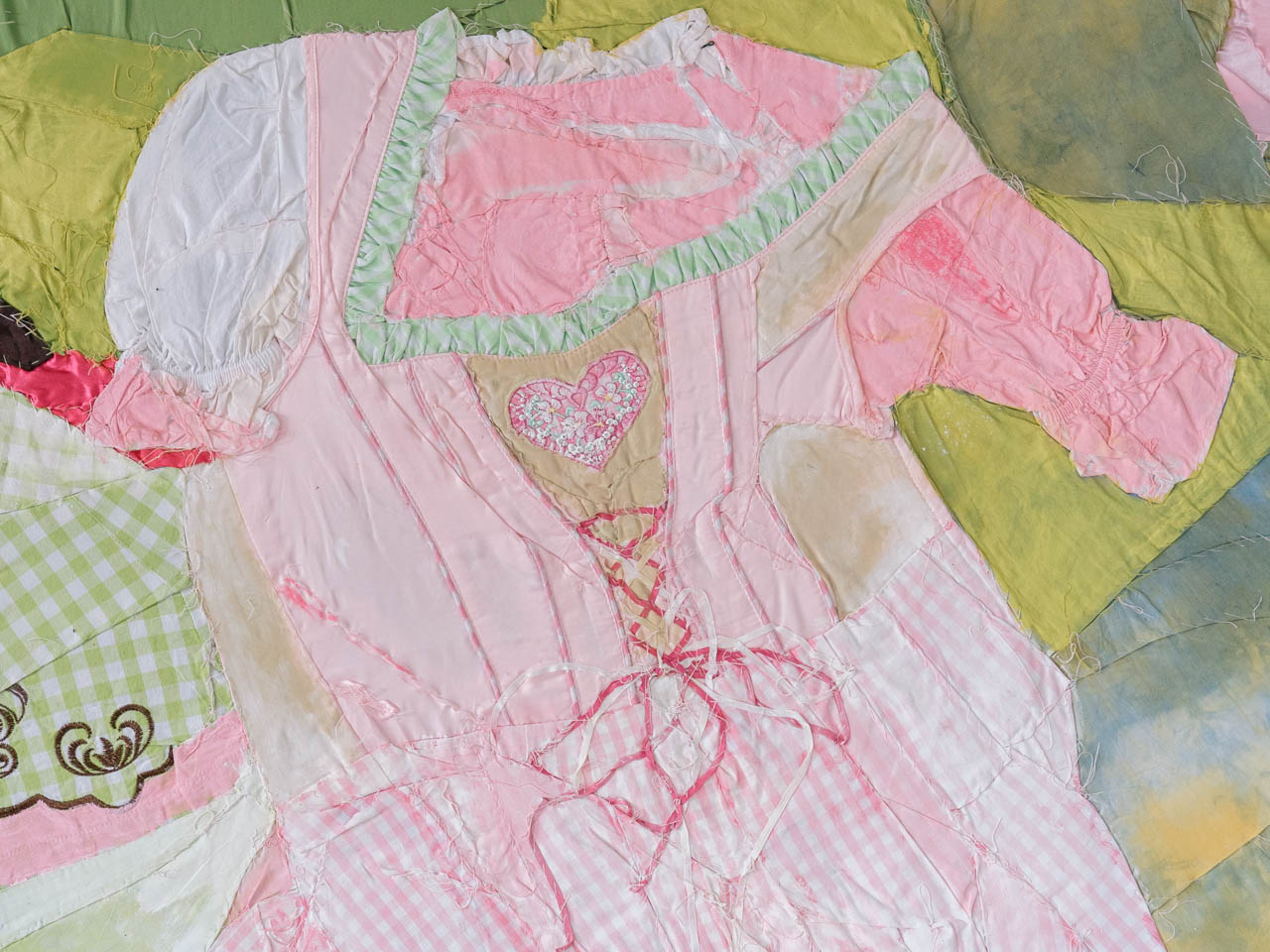
A: Yes, it is sort of communicating a consciousness around choice and autonomy to live how we want to live and still be successful in that.
Isabella, I wanted to ask you, how did you end up working with MOCAD?
I: So, Hannah and I met many years ago in New York when she was a studio assistant for Susan Cianciolo, a forerunner fashion designer who moved into the artistic landscape. At that time, I was working at the New Museum as the producer of a residency program that they used to host, and since then, I have been working in programming and curatorial practice. Actually it was during that time in the New Museum that one of the residency program artists was based in Detroit. This was back in 2016, and that is what initially brought me to the city. It was also at that time that I became friends with Simeon, who owns the Jam Handy, where this exhibition space exists.
Since 2016, I have been coming back and forth to the city. When this job arose, I had already worked as a curator for many years and it was the perfect moment for me to move to Detroit and work with MOCAD full time.
A: So where are you from originally?
I: I am originally from Scotland.
A: So, is this your first exhibition in the space?
I: This is the first show. I do not have a name for it yet. I do need to come up with one though, because although it shares a space with the Jam Handy, it is a different project and that distinction is important to me. I think as a curator who has worked within institutions for so long, it is nice to have a little breathing room. With this space, I do not necessarily need to establish a mission statement. I am interested in exploring different ways to work with artists, so, we will see organically how it develops as a project space, but I want to keep it somewhat open ended.
In addition to the space, there is a residency where artists will be invited to stay while they are producing the work in the studio.
A: It is really impressive that you are just moving here, starting a full time job and opening your own exhibition space. I think it is so important to have these kinds of spaces in the city. We used to have so many DIY spaces, but things changed and many of them got shut down…
I: Yes, and when I first came here in 2016, I remember there were alot more of them. I definitely know that this kind of work is very important for any culture. I am very inspired by artist-run spaces, how they support one another and are open to experimentation. In an institutional setting, there is often very little room to experiment.
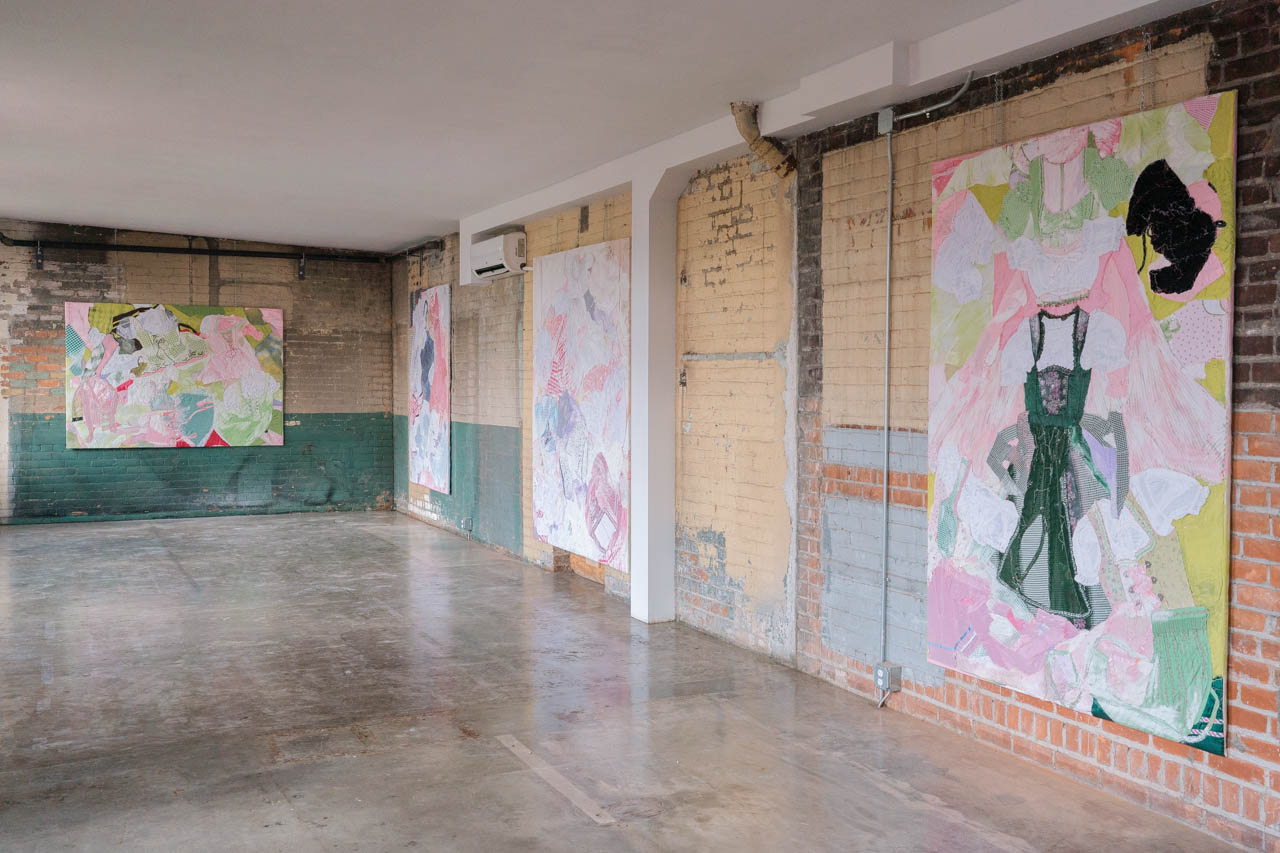
A: Yes, in any culture, there is always going to be a need for institutions, we know that. There is a lot of appreciation and importance for those establishments, but if we don’t have the DIY spaces that are more accessible to work with, then it is really very difficult for the culture.
So you plan to have this space be ongoing, with more exhibitions in the future?
I: Yes, I am excited to work with more artists to produce new shows here. The plan is to build on the network that I have built in the past decade to bring artists in from around the world. Of course, I also plan to work with local artists.
A: One last question. Did you study curation?
I: I didn’t. I actually ended up working in curation in a roundabout way. I studied history and international relations and then went into visual culture and cultural studies. When I approach an art work, that is often my way in. I think about cultural issues, how they deal with them conceptually and how the medium becomes the way of engaging with that. I am always very curious about the artist’s personal story behind their work.
Shell of the Fairytale opened on August 27, 2024 at 2900 E. Grand Blvd. in Detroit.
You can contact isabella.nimmo@gmail.com for more information.